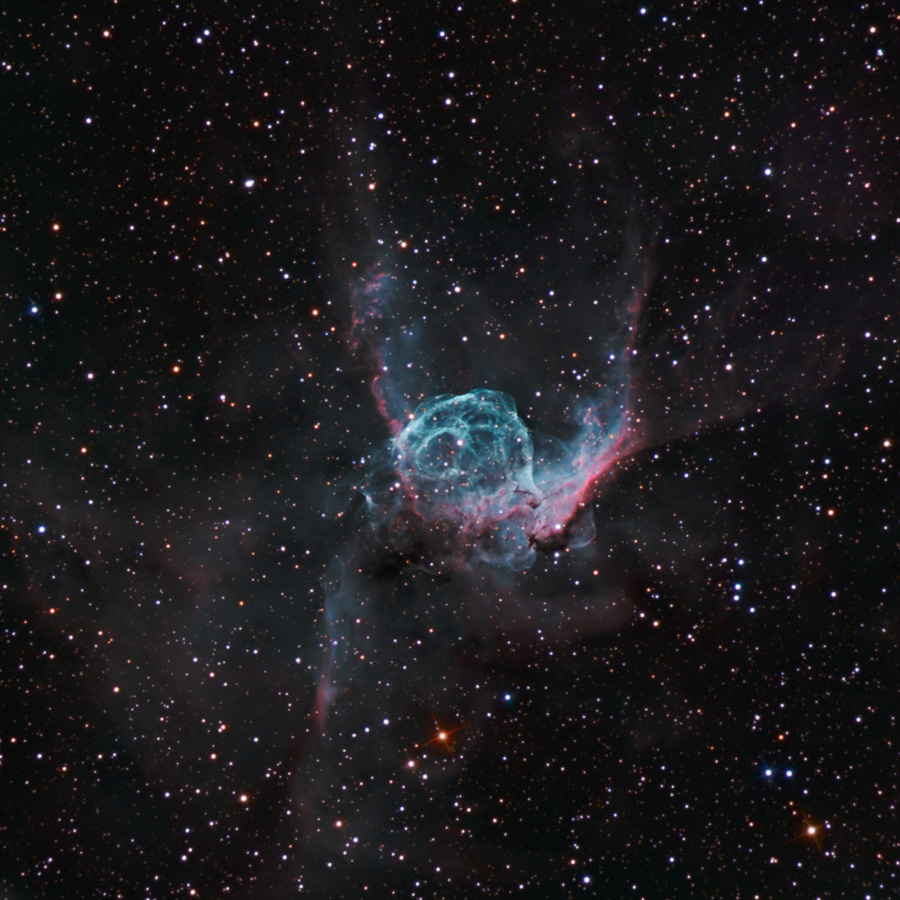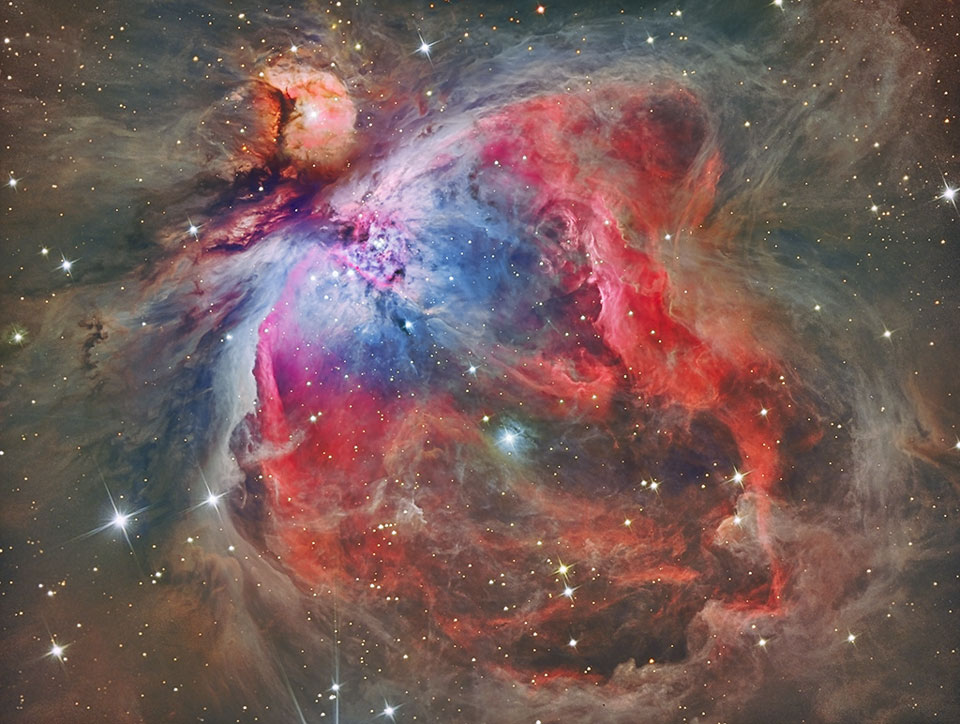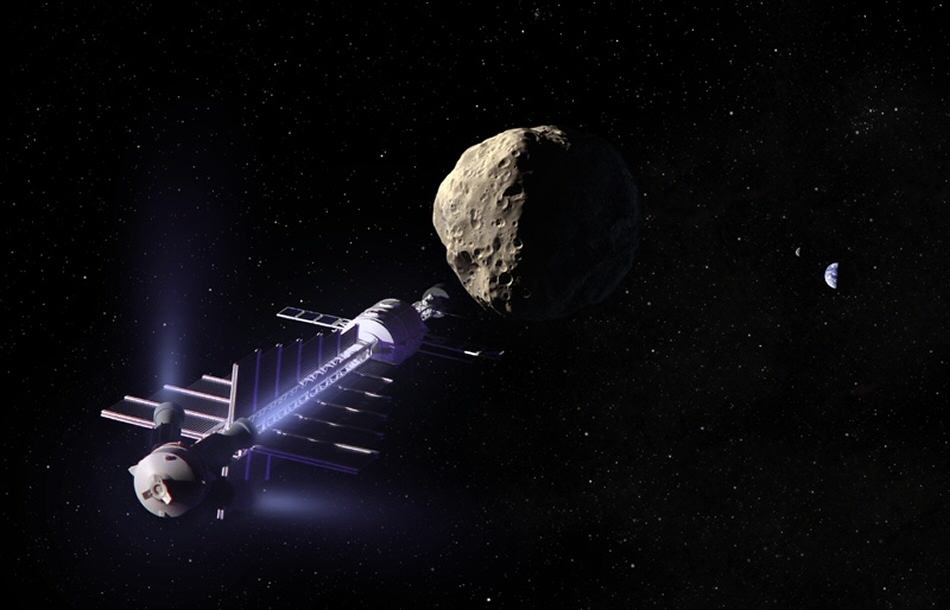
Discovering the Wonders of the Universe!
Saturday, April 20, 2013
Thor's Helmet, the Norse God of Thunder can be seen in the cosmic cloud with wing like appendages. Thor's Helmet is about 30 light-years across. It is cataloged as NGC 2359, the nebula is located about
15,000 light-years away in the constellation Canis Major. It shows off a blue-green color from strong emission due
to oxygen atoms in the glowing gas.


Sunday, April 7, 2013
What is Earth's Future now if the Mayans' Predictions were off? Will Solar Maximum cause the destruction of Earth or will Earth survive?
Check out this video for some possible answers
Will Solar Flares from the Sun destroy the Earth?
How many years have the Earth been orbiting the Sun?
Will humans be able to survive a Solar Maximum?
The answers to all of these questions can been found in this interesting video below:
Sunday, March 31, 2013
Sometimes Discovering the Wonders of the Universe can be seen simply by Discovering our Planet Earth at night!
Check out this cool link from NASA International Space Station (ISS).
http://apod.nasa.gov/apod/ap130331.html
This is a time lapse video that shows the wonders of our Planet at night.
From the thin layer of the atmosphere (Exosphere) where the ISS orbits to the beautiful colors of the auroras located in the Thermosphere just below. This colorful display of lights can be seen at high elevations such as the Antarctic. Thunderstorms can be seen in the Troposphere, the layer closest to the ground!
Check out this cool link from NASA International Space Station (ISS).
http://apod.nasa.gov/apod/ap130331.html
This is a time lapse video that shows the wonders of our Planet at night.
From the thin layer of the atmosphere (Exosphere) where the ISS orbits to the beautiful colors of the auroras located in the Thermosphere just below. This colorful display of lights can be seen at high elevations such as the Antarctic. Thunderstorms can be seen in the Troposphere, the layer closest to the ground!
 |
| Auroras from the Ionosphere at Night |
 |
| Thunderstorms in the Troposphere at Night |
Sunday, March 24, 2013
Have you ever wondered how stars are formed in the Galaxy?
The answer can be found by looking into the night sky at The Orion Nebula. It is an example of a stellar nursery where new stars are being born. Observations of the nebula have revealed approximately 700 stars in various stages of formation within the nebula.The Orion Nebula (also known as Messier 42, M42, or NGC 1976) is a diffuse nebula situated south of Orion's Belt in the constellation of Orion. It is one of the brightest nebulae, and is visible to the naked eye in the night sky. M42 is located at a distance of 1,344 ± 20 light years and is the closest region of massive star formation to Earth. The M42 nebula is estimated to be 24 light years across. It has a mass of about 2000 times the mass of the Sun. Older texts frequently refer to the Orion Nebula as the Great Nebula in Orion or the Great Orion Nebula.
The Orion Nebula is one of the most scrutinized and photographed objects in the night sky, and is among the most intensely studied celestial features. The nebula has revealed much about the process of how stars and planetary systems are formed from collapsing clouds of gas and dust. Astronomers have directly observed protoplanetary disks, brown dwarfs, intense and turbulent motions of the gas, and the photo-ionizing effects of massive nearby stars in the nebula. There are also supersonic "bullets" of gas piercing the hydrogen clouds of the Orion Nebula. Each bullet is ten times the diameter of Pluto's orbit and tipped with iron atoms glowing bright blue. They were probably formed one thousand years ago from an unknown violent event.

The answer can be found by looking into the night sky at The Orion Nebula. It is an example of a stellar nursery where new stars are being born. Observations of the nebula have revealed approximately 700 stars in various stages of formation within the nebula.The Orion Nebula (also known as Messier 42, M42, or NGC 1976) is a diffuse nebula situated south of Orion's Belt in the constellation of Orion. It is one of the brightest nebulae, and is visible to the naked eye in the night sky. M42 is located at a distance of 1,344 ± 20 light years and is the closest region of massive star formation to Earth. The M42 nebula is estimated to be 24 light years across. It has a mass of about 2000 times the mass of the Sun. Older texts frequently refer to the Orion Nebula as the Great Nebula in Orion or the Great Orion Nebula.
The Orion Nebula is one of the most scrutinized and photographed objects in the night sky, and is among the most intensely studied celestial features. The nebula has revealed much about the process of how stars and planetary systems are formed from collapsing clouds of gas and dust. Astronomers have directly observed protoplanetary disks, brown dwarfs, intense and turbulent motions of the gas, and the photo-ionizing effects of massive nearby stars in the nebula. There are also supersonic "bullets" of gas piercing the hydrogen clouds of the Orion Nebula. Each bullet is ten times the diameter of Pluto's orbit and tipped with iron atoms glowing bright blue. They were probably formed one thousand years ago from an unknown violent event.

Sunday, March 10, 2013
Will more asteroids collide with Earth in the near future?
Rocks from space hit Earth every day. The larger the rock, though, the less often Earth is struck. Many kilograms of space dust travel to Earth daily. Larger bits appear initially as a bright meteor. Baseball-sized rocks and ice-balls streak through our atmosphere daily, most evaporating quickly to nothing. Significant threats do exist for rocks near 100 meters in diameter, which strike the Earth roughly every 1000 years. An object this size could cause significant tsunamis were it to strike an ocean, potentially devastating even distant shores. A collision with a massive asteroid, over 1 km across, is more rare, occurring typically millions of years apart, but could have truly global consequences. Many asteroids remain undiscovered.

Rocks from space hit Earth every day. The larger the rock, though, the less often Earth is struck. Many kilograms of space dust travel to Earth daily. Larger bits appear initially as a bright meteor. Baseball-sized rocks and ice-balls streak through our atmosphere daily, most evaporating quickly to nothing. Significant threats do exist for rocks near 100 meters in diameter, which strike the Earth roughly every 1000 years. An object this size could cause significant tsunamis were it to strike an ocean, potentially devastating even distant shores. A collision with a massive asteroid, over 1 km across, is more rare, occurring typically millions of years apart, but could have truly global consequences. Many asteroids remain undiscovered.

Sunday, February 24, 2013
How Can The Great Russian Meteor of 2013 (February 18, 2013) Be Avoided In The Future?
This link gives a possible solution: http://apod.nasa.gov/apod/ap130221.html
A Gravitational Tractor

One possibility is a massive spacecraft that uses gravity as a towline as illustrated in this artist's vision of a gravitational tractor in action.
Monday, February 18, 2013
This blog is to show different events in Astronomy that are occurring across the Universe and will help us to learn more about the Galaxy that we live in! Most of these events will not only excite but will bewilder the human mind! When meteoroids intersect with the Earth's atmosphere at night, they are likely to become visible as meteors. If meteoroids survive the entry through the atmosphere and reach the Earth's surface, they are called meteorites. Meteorites are transformed in structure and chemistry by the heat of entry and force of impact.
The Great Russian Meteor of 2013 (February 18, 2013)
See link below for an awesome view of the Meteor that hit Russia from actual dash camera videos!
http://apod.nasa.gov/apod/ap130218.html
This event shows the unpredictable nature of the universe and an event larger than this can eventually lead to another Ice Age!

The Great Russian Meteor of 2013 (February 18, 2013)
See link below for an awesome view of the Meteor that hit Russia from actual dash camera videos!
http://apod.nasa.gov/apod/ap130218.html
This event shows the unpredictable nature of the universe and an event larger than this can eventually lead to another Ice Age!

Subscribe to:
Posts (Atom)